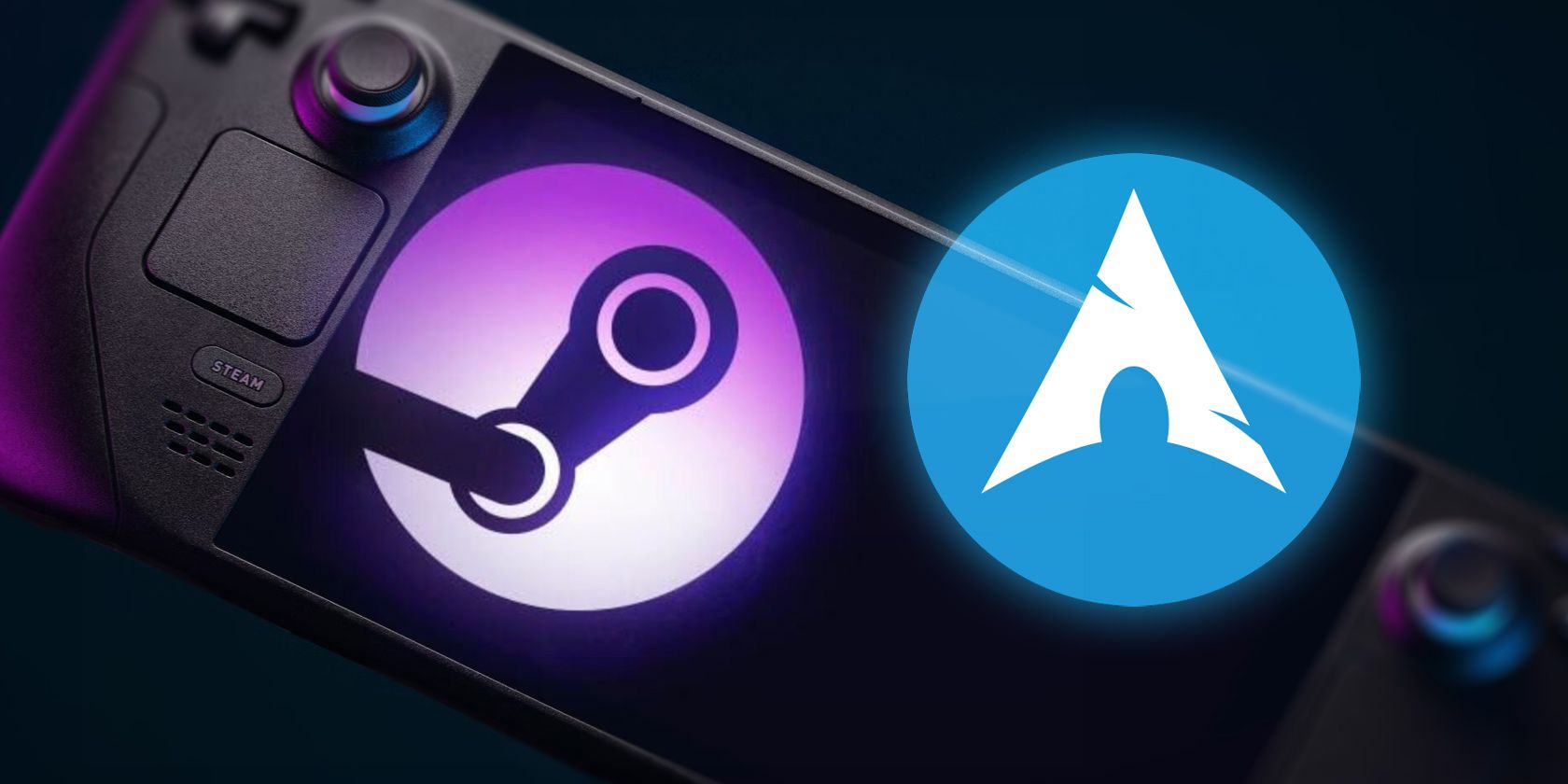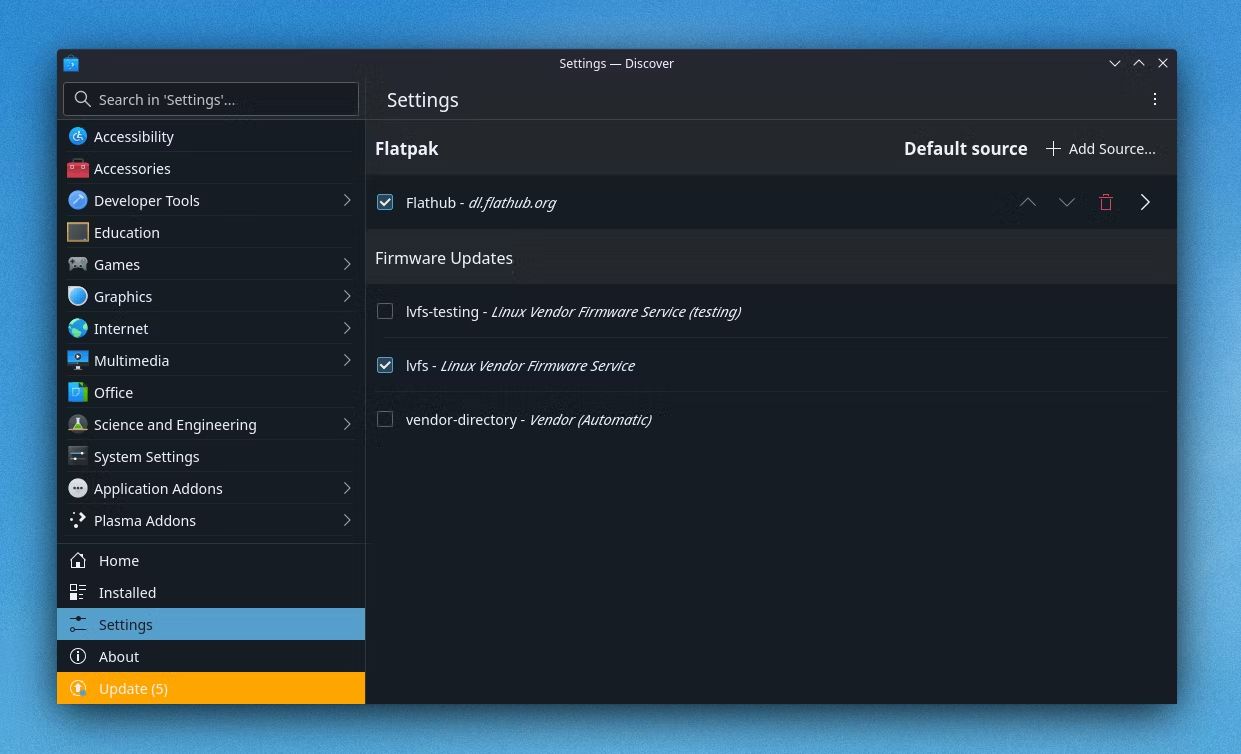You may have heard that the Steam Deck uses Arch Linux. This is technically true. Valve's SteamOS is based on Arch Linux.
But the experience on the Deck is very different from what you would encounter if you installed Arch Linux on a PC. Here are some ways SteamOS is different from its parent distribution.
1. You (Kinda) Can't Use Pacman
Most of the software on your PC comes in the form of packages. To add or remove packages, you need a package manager. That's where Pacman comes in. Pacman is the command line-based package manager that comes with Arch Linux. Yup, Pacman is short for "package manager," not a reference to the yellow pellet-eating pie-shaped sprite.
If you install Arch Linux the traditional way, you will end up using Pacman before you even make it to a functional graphical desktop. On SteamOS, your desktop comes all set up and ready to go.
If you decide to open a terminal and type in a Pacman command, as you would on regular Arch Linux, you will receive an error message. SteamOS doesn't allow software changes in this way.
If you turn off read-only mode, the situation changes somewhat. Yes, you can technically use Pacman at this point, but any software you install will go away when Valve issues the next system update.
2. You (Kinda) Can't Access the AUR Either
The Arch User Repository, better known as the AUR, is one of the big appeals of Arch Linux. If something isn't available from the official Arch repositories, there's a very good chance it's available in the AUR.
On SteamOS, the AUR isn't available out of the box. You can technically access the AUR, just like you can technically access Pacman, by turning off read-only mode. And just like with Pacman, any software you install from the AUR will go away when you install a new system update.
You may be reading this thinking that all you need to do after each update is reinstall your stuff, and that's true. If this sounds like a workable solution to you, then yes, you still have access to both Pacman and the AUR on SteamOS. But for others, this is a distinct difference from Arch Linux that you're not going to want to deal with.
3. Less Risk of Breakage
The reason you can't use Pacman or the AUR without regularly replacing your software has to do with the changes Valve made to make Arch Linux more stable.
According to Valve's Steam Deck FAQ, the company distributes SteamOS as a read-only OS, akin to the way Apple and Google manage their operating systems.
On the Linux front, Fedora Silverblue is the most well-known image-based distro. On such a system, instead of updates and software making changes to system files directly, all system files are distributed as part of one system image.
When it's time for updates, the entire system image gets replaced. This reduces the likelihood of an update or app installation leaving your device in a state where it won't boot.
In short, Valve assembles a working Arch-based operating system, saves this setup as an image, and distributes this image directly to you. Then instead of shipping you a continuous stream of updates to individual packages, as you would experience if you were using Arch Linux on a PC, Valve tests updates and ships a newer version of the entire OS when they feel there have been enough changes.
If you do want to make edits to the read-only image, you can do that with a single command:
sudo steamos-readonly disable
Even with modifications enabled, life on the Steam Deck still isn't as precarious as with regular Arch Linux. Again, when updates come in, they will return your system files to a clean slate, undoing your modifications.
4. You Don't Have Full Freedom to Customize Your System
Valve's approach to SteamOS makes it a much more consumer-ready system. Having a system that ships in a working state, requiring no set-up and little chance of breaking, is what the vast majority of people want. But for people who want complete control over their experience, SteamOS does away with what they love most about Arch.
Arch Linux makes very few decisions for you. You get to choose your own desktop environments. You can pick your own display server, audio server, file system, and more. Your PC is what you make it, not what someone else decided.
SteamOS isn't that. Yes, it's technically Arch. But at the same time, it isn't Arch. You could argue that it's more restrictive than Ubuntu, Fedora, or any other typical Linux system. So if you want maximum freedom, you may not be happy with attempting to use a Steam Deck as your PC.
5. You Don't Have Access to Snaps
SteamOS utilizes Flatpak as its primary app distribution format. But Flatpak is only one of the universal package formats available for Linux. If you come from an Ubuntu background, you may be familiar with Canonical's Snap format instead. Some apps are only available for Linux as snaps.
SteamOS doesn't come with the required software to run snaps, and you can't easily install the required code. Even with read-only mode disabled, it's a challenge to get access to the necessary part of the system to install snapd, the Snap daemon required to install snaps. So for all but the most dedicated of people, snaps are not an option.
Is this a big deal? That really depends on the software you wish to run. Many popular programs are available in the Flatpak format. The broader open-source community has generally rallied around Flatpak over Snap.
But some apps are only available as a snap, and if one of these is a must-have program for you, then SteamOS may not be as viable for you as regular Arch Linux.
SteamOS and Arch Linux: More Different Than Alike
SteamOS and Arch Linux share similar underpinnings, but they're not the same distro. In many ways, the difference between SteamOS and Arch is even larger than Ubuntu's relationship with its parent distro, Debian.
Often enough, you're better off thinking of both distros as fundamentally different from their parents and treating them as such. SteamOS and Arch Linux are vastly different, but that doesn't make SteamOS any less of a good distro for the Steam Deck.


